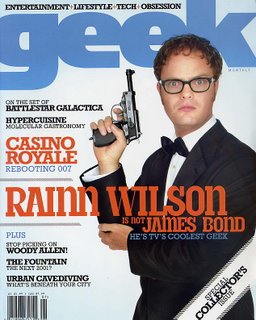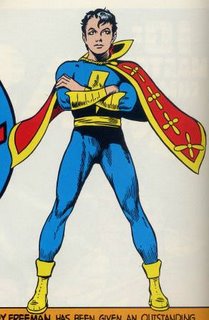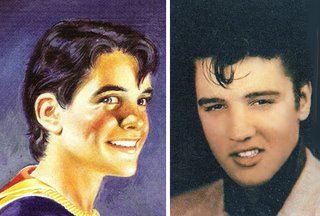Most Americans are familiar with Orson Welles’ broadcast of the War of the Worlds on some level. At the very least, they know that it fooled a lot of its listeners into thinking it was real, and caused a panic. What most of us on this side of the Atlantic don’t know is that Britain had its own Halloween panic- in 1992.
So- picture this. It’s Halloween eve, and you’re settling in to watch a program about “The Most Haunted House in Britain.” It’s being filmed live, with Michael Parkinson in the studio, Sarah Greene in the house, and Craig Charles outside interviewing neighbors and providing comic relief. (Parkinson is well-known in Britain as a talk show host and celebrity interviewer- think of a combination of Tom Brokaw and Phil Donahue. Sarah Greene worked in children’s programming, while Craig Charles is best known as Lister from Red Dwarf.) The documentary is called Ghostwatch and within a few hours it will become the first TV show ever to be cited in the British Medical Journal as having caused Post-Traumatic Stress Disorder in children. It will also be banned from British TV for over 10 years.
So, what’s the fuss all about? In a nutshell, we learn of the Early family- divorced Mom Pam, and her two young daughters- teen Suzanne and 10-year-old Kim. They live in a row house in which they’ve been experiencing poltergeist phenomena, which they credit to “Pipes”, because the ghost first made himself known by banging on the plumbing. Through interviews with the Earlys and their neighbors, we learn of the legend of Mother Simmons- a 19th century nanny who lived in the area (perhaps right where the Earlys' house is now) and murdered several young children.
Pipes’ activities, at first, were pretty harmless- noises and such. As time went on, however, and things started getting more violent, Mrs. Early appealed to the Council to let them move to another house. The Council, finding no bylaws against poltergeists, refused, causing her to go the media with her complaint. This is how their story came to be used for the program.
I’d read about this show not to long after it aired, thanks to Fortean Times magazine- a British publication that covers strange phenomena. I really, really, really, wanted to see this show, but at the time it seemed hopeless. How was I going to see something that would never be aired in Britain again, let alone shown in America.
Time went by, and I forgot about the show until I visited a dealer’s table at a Chiller Convention. There it was- $20 for a DVD of the broadcast! Appropriately enough, I made this purchase right around Halloween 2002, the 10th anniversary of the broadcast. I got home from Chiller that night, to my condo where I lived alone, and popped the DVD in as daylight faded, and my living room got dark.
I started out watching the show with all the lights off, but I had to turn them on after about 30 minutes, and the lights stayed on all night. I knew the show was a work of fiction, but it still creeped me out- I can’t imagine how an unsuspecting audience would have reacted to it.
But what made it so scary?
First off, I think it starts off very believably, as most of what happens is low-key. Pipes’ voice is genuinely disturbing, and you get a few “Gotcha!” moments to make you jump. But there was something more...
It wasn’t until I started searching the internet that I found out what that something was- there are about 8-10 instances where Pipes is subliminally inserted into the picture. Most of the appearances are only 2 or 3 frames long, which mean it’s hard to get a good look at him even with a DVD’s ability to slow down and stop. In addition, rather than splice in a few frames of Pipes by himself, as was done with the demon faces that are spliced into The Exorcist, Pipes shows up in the background while the action is going on. He’s there too briefly to consciously register, but he does register. And I’m glad it’s only a subliminal shot- I saw a website that showed the actor playing Pipes in make-up, and all I can say is it’s a very disturbing make-up that he’s in (remember- the cats got to him before his body was found).
The show kind of goes off the rails towards the end as the studio starts going crazy- it’s an over-the-top ending for what the somewhat low-key and subtle scares of the first part. In a way, though, it’s good because the ridiculousness of the end lets you laugh a little and let off some of the tension the show generated.
It’s a shame the only official release of the show is a Region 2 DVD because I think there would be an audience for it in America, too. As it is, though, if you’re a geek you can probably find it pretty easily at comic or sci-fi conventions, or you can probably locate a copy on eBay. It’s definitely worth it.





